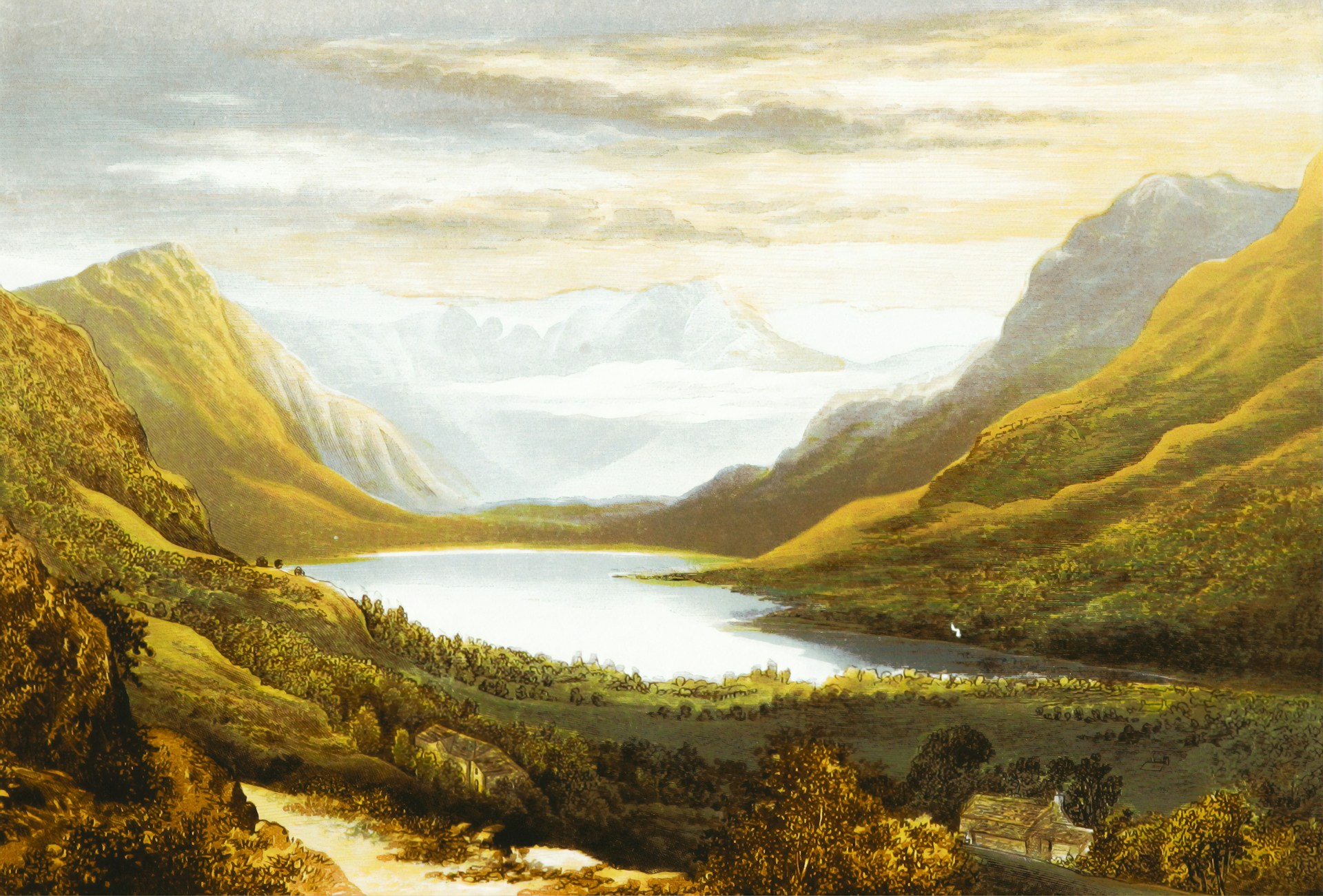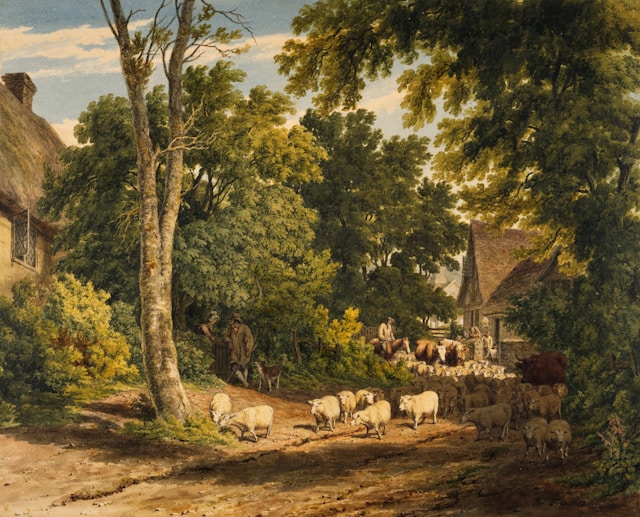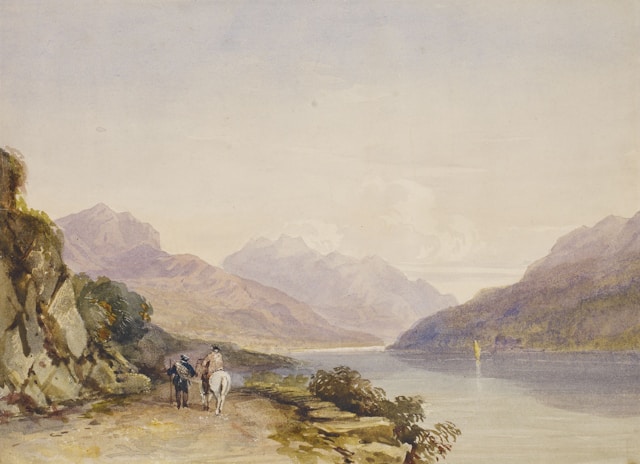
How do you add depth to a two-dimensional artwork? If you’re an observational artist painting a landscape or a still life, you need to be able to accurately convey a sense of perspective and scale.
In this article, we look at techniques for creating depth in art. We’ll examine how composition, detail and colour can all be used to give a 2D painting the illusion of depth, including how elements of art such as value, texture and lines feature.
How to draw depth using composition techniques
What is depth in art? It’s the way in which artists use certain techniques to recreate a realistic sense of scale and perspective in a painting or drawing.
To get a better idea of how depth is created in practice, we’ll take a closer look at three paintings. Let’s start with this 1818 view of Ha’penny Bridge by Samuel Frederick Brocas, from his series Select Views of Dublin.

Linear perspective
Like most urban artists, Brocas has used linear perspective to give his scene a sense of depth. This technique uses a vanishing point for reference, hence its other name of “one-point perspective”, although you can have more than one vanishing point. The artist begins by drawing a horizon line and then placing the point(s) on this. All other lines in the composition, known as “orthogonal” or “vanishing lines” lead to the vanishing points. In this case, the lines of the buildings, street and river give an illusion of depth to the picture.
Composition – background and foreground
When we look at an artwork, we naturally process the bottom area of the composition as foreground and the top as background. The artist uses techniques such as colour, value and detailing to emphasise this: foreground objects are typically sharper and more detailed, while background ones have blurrier edges and less focus. Take a look at how the windows change as the houses recede towards the background.
Foreshortening
Objects straight in front of us get smaller the further away they are. However, their proportions don’t change – tall trees don’t suddenly become short just because they’re in the distance. However, if you change your line of sight, those elegant trees now look squat. Capturing this distortion can be quite tricky. If you look closely at Brocas’ painting, you can see this in objects such as the figures, the houses and the windows.
Creating depth in painting using details
As we’ve just discussed with foreshortening techniques, you can make great use of the objects in your artwork to suggest depth. Robert Hills does this in his pastoral painting, Driving Home the Flock (1812).

Diminishing scale
Put simply, close-up elements are bigger. This is the most straightforward way to indicate depth in a painting, and it works even better if you can show similar objects in different sizes. The sheep in the foreground are larger than the ones bringing up the rear of the flock: it really is that simple. These leading sheep are almost as big as the horse and cattle in the middle distance, showing size on a comparative scale.
Overlapping elements
This takes a bit more planning but is another clear and easy way to add depth to your drawing. If one object partially conceals another, it’s obvious that one must be in front of the other and therefore you’re creating the illusion of depth. The trees on the left of Hills’ composition have been placed in an overlapping row.
Texture and detail
Keep looking at that row of trees in Hills’ painting. Zoom in on the bark on the closest tree, and take in all the texture and detail of the moss and bark. We can also make out features in the next tree, especially its leaves, while the third tree has more the suggestion of leaves and bark than any details. We can see the same effect with the sheep’s faces and the buildings on the right. This is because objects become less detailed with distance, and we’ll dive into that (atmospheric perspective) shortly.
How to add depth to a drawing using colour
Colour can be hugely important when it comes to giving your painting or drawing depth. Our third and final artwork is this scene of a loch, The Path by the Lake painted in watercolour by David Cox Junior in 1836.

Atmospheric perspective (value)
Why do objects in the distance appear softer and more muted? There are more particles in the atmosphere between us and far-away objects, and these particles scatter light. The result is that distant objects appear blurrier and less detailed. Painters like Cox can use value (the level of light and dark of a colour) to show atmospheric perspective. It’s really clear in this painting: look at the difference in value between the rocks in the foreground in the fourth outcrop in the background.
Saturation
The colours also become less saturated the deeper you go into the composition. Again, atmospheric particles make colours look more muted, which is why the distant hills are pale and dull in comparison with the foreground rocks. Use brighter, warmer and deeper colours for the closer subjects, gradually increasing the value (making them lighter) and using cooler tones as objects literally fade into the distance.
Focus
Like a photograph, close-up objects are more in focus while the background is more blurred. You can use colour, value, clean lines and detailing to give certain objects more focus than others.
The two figures and the horse in the foreground, while still loosely painted, are detailed enough for us to make out that the people are wearing hats, and one has a tartan sash. When you’re creating an artwork, think about which objects need to be sharper and which need a blurrier treatment.
If you want to learn more about techniques like these, explore artist Jonathan Yeo’s BBC Maestro course, Portrait Painting. He shares his experiences as a portrait artist with us, along with plenty of helpful advice and tips.





